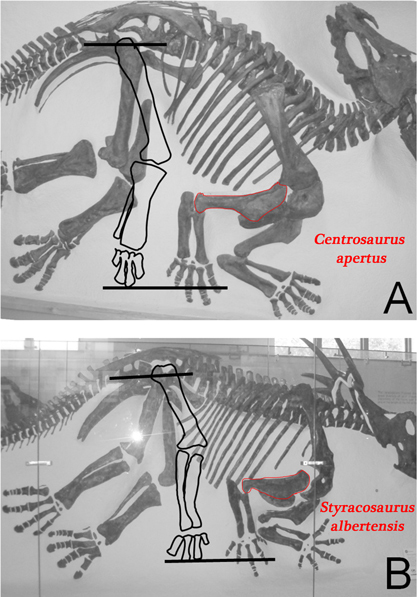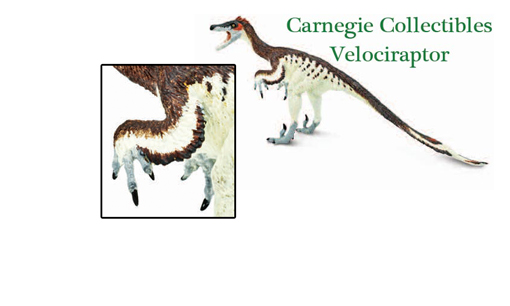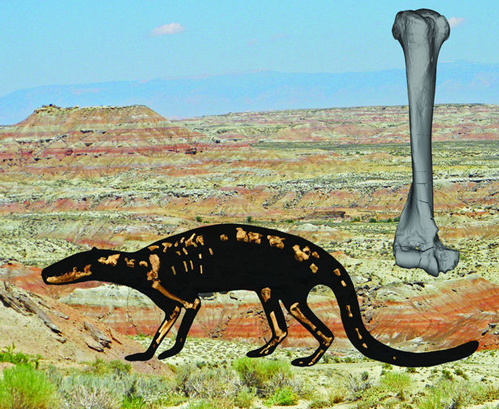Dinosaur Forelimbs at Rest
Putting Dinosaur Forelimbs in Their Place
Ask any young dinosaur fan to tell you some facts about the body of Tyrannosaurus rex and you can bet that after that huge skull, powerful bite, and those awesome teeth are mentioned, a comment will be passed regarding those very short arms.
New research published this month in the academic, on line journal PLOS One puts the forelimbs of the Dinosauria centre stage, the study conducted by scientists from Fayetteville State University (North Carolina) and South-east Missouri State University suggests that the position of the arm bones in many museum reconstructions, the front legs of many a dinosaur model may be wrong. The study does not pretend to be the last word on dinosaur limb placement, but it does point out that a number of museum exhibits have different reconstructions amongst mounted dinosaur skeletons.
Ceratopsidae (Horned Dinosaurs) Were Included in the Study
Picture credit: PLOS One with additional annotation by Everything Dinosaur
The picture above shows two articulated specimens of horned dinosaur, both centrosaurines. The research team only used dinosaurs that had specimens which had been preserved in articulation. In this way, the resting pose of the shoulder blades (scapulae) and the forelimbs can be summarised without having to be too concerned with distortion or extensive crushing which may have resulted from the fossilisation process.
Dinosaur Forelimbs
The photographs show that the ceratopsid sacrum (vertebrae over the pelvis) is horizontal, that is parallel with the ground when the humerus is held horizontally.
As both specimens in the picture above are shown in right lateral view (viewed from the right side), we have outlined the approximate position of the right humerus, it can be seen to be held almost horizontal. The black line through the long axis of the sacrum is sub-parallel with the line that serves as a proxy for the horizontal by connecting the tips of the metapodials (the long bones in the hand) of the right forelimb (with the horizontal humerus) and a line drawing showing the right rear leg re-positioned to simulate a normal standing pose.
It’s All in the Pose
The lead author of the research biologist Phil Senter (Associate Professor in the Department of Biological Sciences, Fayetteville State University, along with is co-collaborator Professor Jim Robins, used their own photographs of mounted skeletons in combination with museum figures to analyse the correct angle of the resting position of the shoulder blades, the coracoid and the front limb bones. In addition to selecting only articulated individuals to study, the scientists studied those animals that were preserved lying on their sides and for each of the animal’s included in the study the front limb joints had to be preserved in an articulated state, providing as much information as possible with regards to their position when the animal was alive.
Basal Ornithopods, early theropods and dinosaurs close to evolutionary split into Aves (birds) were included in the research.
Although the focus was on bipedal dinosaurs, facultative bipeds such as Edmontosaurus and Parasaurolophus were included in the genera examined. The long axis of the scapular blade (shoulder bone) was found to be most horizontal in bipedal saurischians, most vertical in basal members of the Ornithopoda, and intermediate in hadrosauroids.
The Little Chinese Theropod Caudipteryx was Included in the Study
Picture credit: Everything Dinosaur
Implications for Theropod Dinosaurs
The research suggests that in bipedal dinosaurs other than theropods with semi-lunate carpals (semi-lunate carpals are unique in the Maniraptora which include dinosaurs such as Velociraptor, Microraptor, Oviraptor, Khaan and Caudipteryx), the resting position of the elbow is close to a right angle and the resting orientation of the wrist is such that the hand exhibits little deviation from the rest of the arm. However, in the Theropoda with those more flexible wrists (thanks to the semi-lunate carpals), the elbow and wrist are more flexed at rest, with the elbow at a more acute angle and the wrist approximately held at ninety degrees.
Theropods with Semi-lunate Carpals Such as Velociraptor Have Elbows and Wrists More Flexed at Rest
Picture credit: Everything Dinosaur
The Caudipteryx and the Velociraptor models depicted in this article are part of the Safari Ltd range of prehistoric animal figures. To view this range: Wild Safari Prehistoric World Animal Models.
Whilst this may not be a definitive study, due to the relatively low numbers of skeletons assessed, it does have significant implications for the curators of dinosaur collections in museums aiming to mount an anatomically correct exhibit. It may be time to re-adjust those forelimbs in order to better reflect this interpretation of the fossil record.






